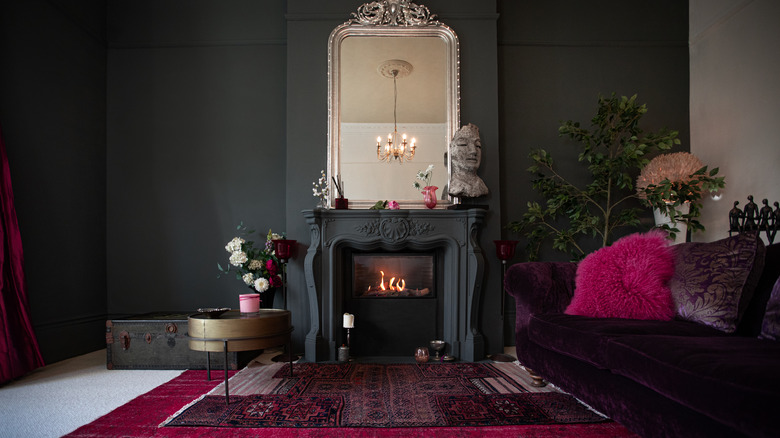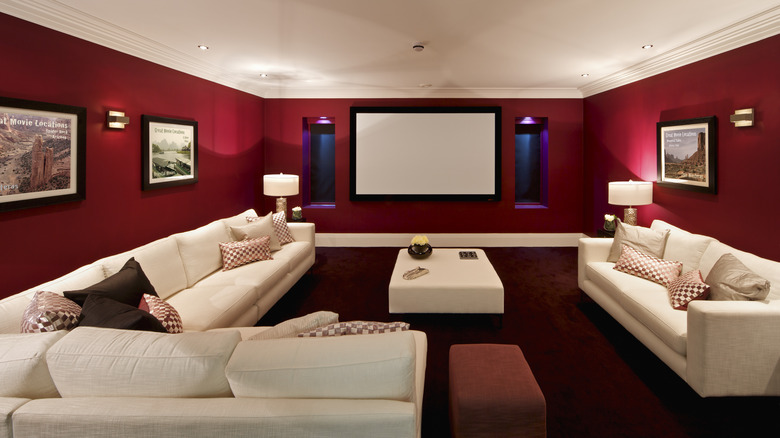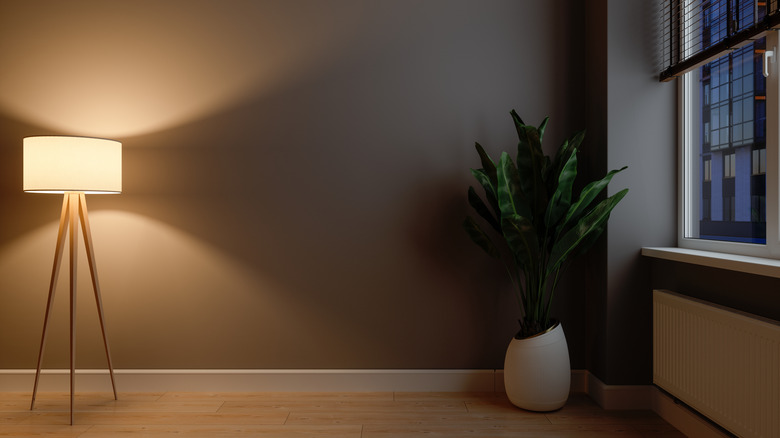Nate Berkus Dishes Out Helpful Tips And Tricks For Brightening Up A Dark Room
Several factors can contribute to a room appearing dark. It may have inadequate indoor lighting or be in a position where it receives limited natural light from outside. The color of the walls, ceiling, and furnishings can also affect how light is reflected, and dark colors can make it feel darker. When asked how to brighten up a dark room, Nate Berkus suggests bringing in light, plain elements and using artificial lights to your advantage.
"The easiest way that I've found is [balancing] it out with things that are really, really light," he says, using ivory linen curtains as an example. Where there is a heavy presence of dark colors in a room like on the walls and ceilings, floor-to-ceiling drapes in light colors will help to balance it out because they take up a significant amount of visual space. "What you notice isn't the darkness of the room any longer, you notice the contrast," Nate explains (via Instagram).
Stick to light, plain elements
Furniture pieces are also things that can make a room feel dark, which is why Nate Berkus suggests lighter upholstered furniture. Deep, dark colors for common upholstery materials like leather and velvet for your sofa or chair can negatively affect the way light travels in the room and make it feel heavy. Light-colored materials, on the other hand, can help reflect and distribute light more effectively. If you still want to have dark furniture, you'll have to lean on the other elements of the room for balance. Keep the ceiling or walls light and bring in light pops of color with items like rugs, plants, and other accessories when you can.
Be careful with the accessorizing, however, as Berkus advises against too much pattern or a lot of color. "I think it's just a pure move to do something solid and ivory or off-white or bone or chalk against a dark wall," he says in his Instagram post. The idea behind this is that patterns and bold colors are good for visual interest, but they won't work since a dark room doesn't need to feel busier. It's better to stick with plain patterns and warm whites.
Intensify the artificial lighting
Boosting the indoor lighting is another way to brighten a dark room. It makes a big difference to have the right amount of artificial lighting coming from the right places and, when you can control the brightness, lighting can transform any room. Berkus suggests having sconces, floor lamps, and small table lamps distributed around so you can "control the mood," per Instagram.
Place those ambient lights in the corner and they will not only brighten up the space but help you create cozy spots in it. This is especially great if you're going for a moody or mysterious atmosphere because the darkness won't feel unplanned. Another thing that can assist the lighting added by the fixtures is a well-placed mirror so it can reflect them. It also helps to limit wall art and hangings so there's more open wall space in the room for the light to bounce off of.


